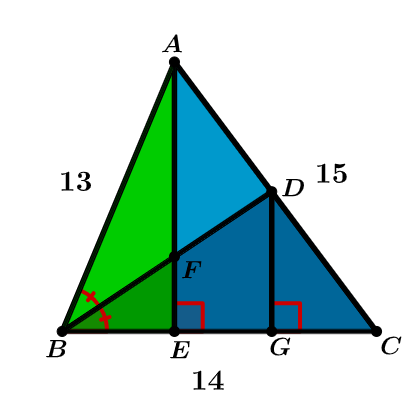Angle Bisector and Altitude
If
A
B
=
1
3
,
B
C
=
1
4
, and
A
C
=
1
5
,
D
F
can be written in the form
c
a
b
, where
a
and
c
are coprime, positive integers and
b
is square-free. What is
a
+
b
+
c
?
The answer is 35.
This section requires Javascript.
You are seeing this because something didn't load right. We suggest you, (a) try
refreshing the page, (b) enabling javascript if it is disabled on your browser and,
finally, (c)
loading the
non-javascript version of this page
. We're sorry about the hassle.
2 solutions
Please post the complete solution
We can begin with the fact that, BE=5 & EC=9 and BD²= 14*13(1- 2 7 ² 1 5 ² ) or BD= 9 2 8 √ 1 3 . Also, D A C D = 1 3 1 4 or A D C A = 1 3 2 7 . Using Menelaus's Theorem in Tr. BDC with AFD as the transversal, [ E C B E ][ A D C A ][ L B D L ]=1 which yields, L B D L = 1 5 1 3 or B D D L = 2 8 1 3 . Then DL = 9 1 3 √ 1 3
Hint: Angle Bisector Theorem and similar triangles.